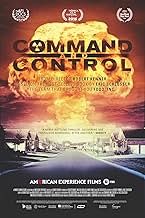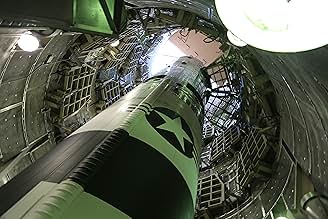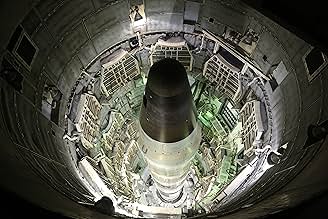Documentary of 1980's near-launch of a nuclear missile from Arkansas, based on Eric Shlosser's award-winning book of the same name.Documentary of 1980's near-launch of a nuclear missile from Arkansas, based on Eric Shlosser's award-winning book of the same name.Documentary of 1980's near-launch of a nuclear missile from Arkansas, based on Eric Shlosser's award-winning book of the same name.
- Awards
- 2 wins total
Photos
Tom Brokaw
- Self
- (archive footage)
Robin Brosch
- Self - Sprecher
- (voice)
Achim Buch
- Self - Sprecher
- (voice)
Bill Clinton
- Self
- (archive footage)
- (as Gov. Bill Clinton)
Jeff Kennedy
- Self - PTS Team
- (archive footage)
- (as Sgt. Jeff Kennedy)
David Livingston
- Self
- (archive footage)
Hans Mark
- Self - Secretary of Air Force
- (archive footage)
Storyline
Did you know
- TriviaThe footage of the Titan missile exploding is actually that of an Orbital ATK Antares rocket exploding shortly after liftoff, on October 28th, 2014.
- GoofsWhile describing a B-52 nuclear bomber, they show footage of a KC-135 tanker aircraft.
Featured review
As a nation, we would all like to think that our country's nuclear weapons program is as safe as it could be-or at least that's the illusion our military leaders have wanted us to believe since nuclear weapons were first developed in 1945. But we would be wrong.
COMMAND AND CONTROL, a 2016 episode of the ongoing PBS program "The American Experience", shows us why. Based on the best-selling book of the same name by Eric Schlosser (who appears as one of the interviewees), the film details one particular nuclear weapons incident that most people in American don't remember or don't realize actually happened. It was an incident at a missile silo outside of Damascus, Arkansas on September 18, 1980, in which one of the technicians working on a Titan II missile accidentally dropped one of his tools down into the silo...and on its way down, the tool punctured the fuel tank of that missile, allowing the fuel to escape and, not long after that, causing the silo to explode and sending the warhead on the missile out into a nearby ditch. One of the men involved in containing the incident was killed in the blast; and for the longest time, it was blamed strictly on the human error of the technician inside the silo. But the truth is, accidents involving our nuclear deterrent were much more frequent than the military or civilian leaders were ever willing to admit to us. Not only were the Titan II missiles in question considered virtual antiques of our nuclear arsenal by 1980, but there were as many as a thousand accidents involving both the Titans and other missile classes, several of which almost led to the leakage of radioactive materials, once in 1961 in North Carolina, and then five years later in 1966 in Spain. This is vital information that the American public never knew about...at least not until Schlosser's book and this subsequent PBS documentary film.
Director Robert Kenner does a great deal at laying out in disturbing and chilling detail the lead-up and the immediate aftermath of the Damascus Incident, an incident that, had that warhead exploded inside the silo, could have killed or nuked everyone and everything within a 70-mile radius of the place. Former defense secretary Harold Brown is interviewed about how even he wasn't fully aware of how dangerous the situation was, given that the incident happened under his watch (during the last months of Jimmy Carter's presidency), as well as the men involved in the silo: Jeffrey Plumb; Allan Childers; Greg Devlin; James Sandaker; and others, along with the actual residents, media representatives, and law enforcement officials whose very existence was threatened by what was going horrifyingly wrong at that silo; former U.S. senator from Arkansas David Pryor, and film footage of folks like then-governor of Arkansas (and future U.S. president) Bill Clinton. There is real fear in the eyes and words of the men involved at Ground Zero in Damascus over what they saw there, and the reality that the Strategic Air Command (known as SAC, whose motto was always "Peace Is Our Profession") wanted to act as if it was only human error that was involved.
But the truth is much more frightening. Nuclear power, because of its own dangers and because of the fallibility of the human race, will always be inherently dangerous. Nuclear weapons are especially vulnerable in this regard. COMMAND AND CONTROL gives the lie to the notion that everything's okay in this arena. It definitely isn't.
COMMAND AND CONTROL, a 2016 episode of the ongoing PBS program "The American Experience", shows us why. Based on the best-selling book of the same name by Eric Schlosser (who appears as one of the interviewees), the film details one particular nuclear weapons incident that most people in American don't remember or don't realize actually happened. It was an incident at a missile silo outside of Damascus, Arkansas on September 18, 1980, in which one of the technicians working on a Titan II missile accidentally dropped one of his tools down into the silo...and on its way down, the tool punctured the fuel tank of that missile, allowing the fuel to escape and, not long after that, causing the silo to explode and sending the warhead on the missile out into a nearby ditch. One of the men involved in containing the incident was killed in the blast; and for the longest time, it was blamed strictly on the human error of the technician inside the silo. But the truth is, accidents involving our nuclear deterrent were much more frequent than the military or civilian leaders were ever willing to admit to us. Not only were the Titan II missiles in question considered virtual antiques of our nuclear arsenal by 1980, but there were as many as a thousand accidents involving both the Titans and other missile classes, several of which almost led to the leakage of radioactive materials, once in 1961 in North Carolina, and then five years later in 1966 in Spain. This is vital information that the American public never knew about...at least not until Schlosser's book and this subsequent PBS documentary film.
Director Robert Kenner does a great deal at laying out in disturbing and chilling detail the lead-up and the immediate aftermath of the Damascus Incident, an incident that, had that warhead exploded inside the silo, could have killed or nuked everyone and everything within a 70-mile radius of the place. Former defense secretary Harold Brown is interviewed about how even he wasn't fully aware of how dangerous the situation was, given that the incident happened under his watch (during the last months of Jimmy Carter's presidency), as well as the men involved in the silo: Jeffrey Plumb; Allan Childers; Greg Devlin; James Sandaker; and others, along with the actual residents, media representatives, and law enforcement officials whose very existence was threatened by what was going horrifyingly wrong at that silo; former U.S. senator from Arkansas David Pryor, and film footage of folks like then-governor of Arkansas (and future U.S. president) Bill Clinton. There is real fear in the eyes and words of the men involved at Ground Zero in Damascus over what they saw there, and the reality that the Strategic Air Command (known as SAC, whose motto was always "Peace Is Our Profession") wanted to act as if it was only human error that was involved.
But the truth is much more frightening. Nuclear power, because of its own dangers and because of the fallibility of the human race, will always be inherently dangerous. Nuclear weapons are especially vulnerable in this regard. COMMAND AND CONTROL gives the lie to the notion that everything's okay in this arena. It definitely isn't.
- How long is Command and Control?Powered by Alexa
Details
- Release date
- Country of origin
- Official sites
- Language
- Also known as
- Управление и контроль
- Filming locations
- Damascus, Arkansas, USA(shots of current state of silo site)
- See more company credits at IMDbPro
Box office
- Gross US & Canada
- $57,635
- Opening weekend US & Canada
- $5,385
- Sep 18, 2016
- Gross worldwide
- $57,635
- Runtime1 hour 32 minutes
- Color
Contribute to this page
Suggest an edit or add missing content





























